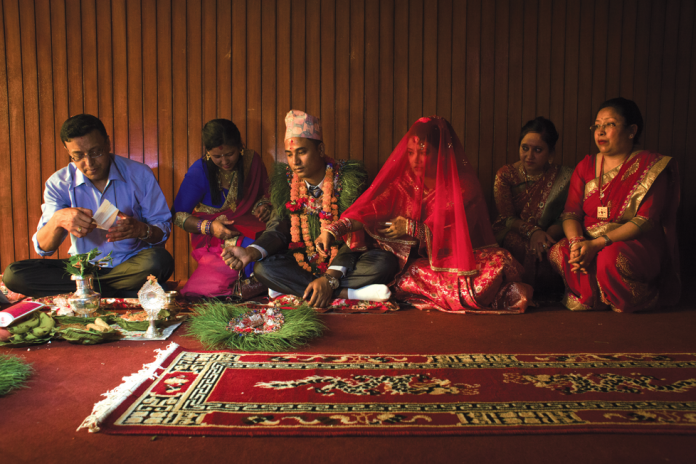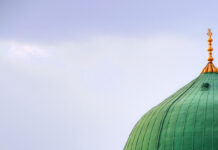The first of a Newari girl’s three marriages is to an everlasting fruit
Text and Photos Elena del Estal
The 15 little girls are waiting for the priest to bless everything, including their new, symbolic husband: a fruit. They run and play in the courtyard, clothed in matrimonial colours of red and gold. Over the next two days, they will be showered with attention and gifts, and there’s little reason not to rejoice, for they’re married!
Unlike other cultures, Newari girls all undergo conjugal rites that start in early childhood and feature three rounds of nuptials, with the final one culminating in union with a man.

For these little brides, Ihi is the first step. Sitting in their father’s lap, they cradle the consecrated bael fruit, or wood apple (a representation of the Hindu god Vishnu, chosen for its resistance to rot), and become permanent wives of the immortal deity. Some believe this practice originated from the 19th century, when, fearing the lusty desires of men from other tribes, Newari families sought a way to protect their girls’ purity by having a god claim it first.
Related: Polygamy Inc.
Still prevalent today, the practice has expanded to protecting women from the stigma of widowhood. After the ceremony, the girls will carefully keep the fruit in pristine condition for the rest of their lives. The next marriage, called Bahra or Gufa, must happen before a girl’s first menstruation, typically around 13 years. She spends 12 days isolated at home in a dark room, away from men and sunlight, during which she receives sex education from female relatives. On the 13th day, she is unveiled outdoors and wedded to the Sun for protection against evil in a female-only ceremony.

In the third and final marriage ceremony, the mature Newari woman dons a red sari to marry her flesh-and-blood partner in Ihipa, a three-day party with friends and family, after which she moves into her spouse’s home, all her weddings finished at last.
 For more stories and photographs from this issue, download a digital copy of Asian Geographic No. 130 Issue 2/2018 here! And subscribe here!
For more stories and photographs from this issue, download a digital copy of Asian Geographic No. 130 Issue 2/2018 here! And subscribe here!











